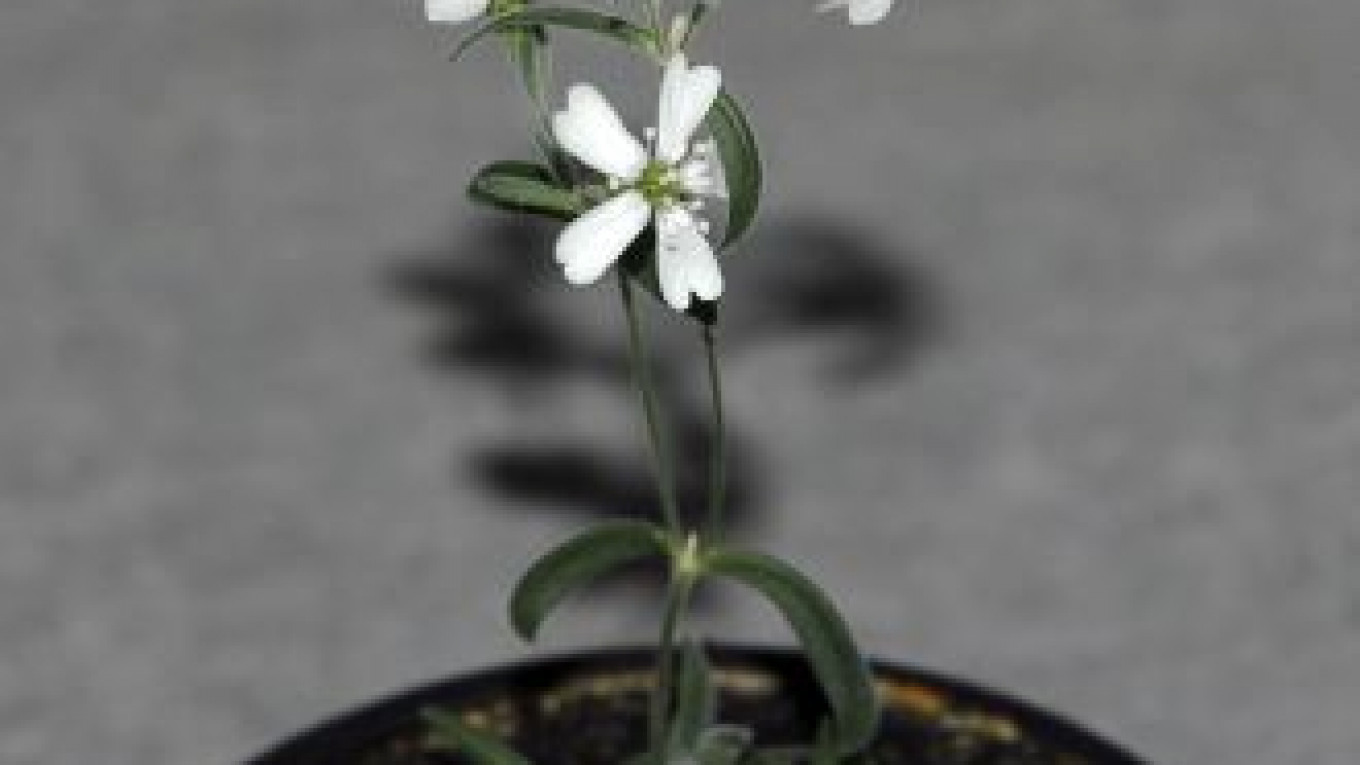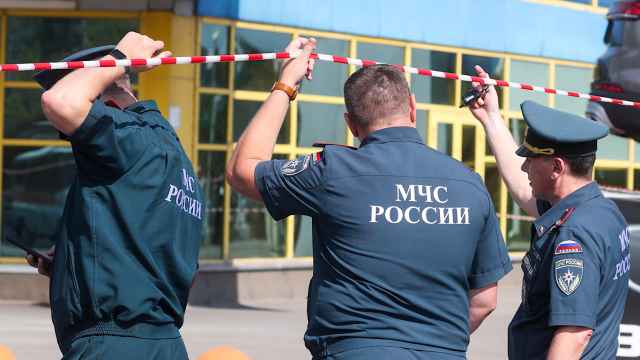It was an Ice Age squirrel’s treasure chamber, a burrow containing fruit and seeds that had been stuck in the Siberian permafrost for more than 30,000 years.
From the fruit tissues, a team of Russian scientists resurrected an entire plant in a pioneering experiment that paves the way for the revival of other species.
The Silene stenophylla is the oldest plant ever to be regenerated, the researchers said, and it is fertile, producing white flowers and viable seeds.
The experiment proves that permafrost serves as a natural depository for ancient life forms, said the Russian researchers, who published their findings in Tuesday’s issue of Proceedings of the National Academy of Sciences.
“We consider it essential to continue permafrost studies in search of an ancient genetic pool, that of pre-existing life, which hypothetically has long since vanished from the earth’s surface,” the scientists said in the article.
Svetlana Yashina, of the Institute of Cell Biophysics at the Russian Academy of Sciences, led the regeneration effort. She said the revived plant looked very similar to its modern version, which still grows in the same area.
“It’s a very viable plant, and it adapts really well,” she said.
The Russian research team recovered the fruit after investigating dozens of fossil burrows hidden in ice deposits on the right bank of the lower Kolyma River in northeastern Siberia with sediments dating back 30,000 to 32,000 years.
The sediments were firmly cemented together and often totally filled with ice, making any water infiltration impossible and creating a natural freezing chamber fully isolated from the surface.
“The squirrels dug the frozen ground to build their burrows, which are about the size of a football, putting in hay first and then animal fur for a perfect storage chamber,” said Stanislav Gubin, one of the authors of the study. “It’s a natural cryobank.”
The burrows were located 38 meters below the present surface in layers containing bones of large mammals such as mammoths, wooly rhinoceroses, bison, horses and deer.
Gubin said the study has demonstrated that tissue can survive ice conservation for tens of thousands of years, opening the way to the possible resurrection of Ice Age mammals.
“If we are lucky, we can find some frozen squirrel tissue,” he said. “And this path could lead us all the way to the mammoth.”
A Message from The Moscow Times:
Dear readers,
We are facing unprecedented challenges. Russia's Prosecutor General's Office has designated The Moscow Times as an "undesirable" organization, criminalizing our work and putting our staff at risk of prosecution. This follows our earlier unjust labeling as a "foreign agent."
These actions are direct attempts to silence independent journalism in Russia. The authorities claim our work "discredits the decisions of the Russian leadership." We see things differently: we strive to provide accurate, unbiased reporting on Russia.
We, the journalists of The Moscow Times, refuse to be silenced. But to continue our work, we need your help.
Your support, no matter how small, makes a world of difference. If you can, please support us monthly starting from just $2. It's quick to set up, and every contribution makes a significant impact.
By supporting The Moscow Times, you're defending open, independent journalism in the face of repression. Thank you for standing with us.
Remind me later.






